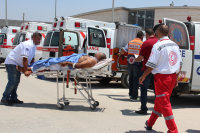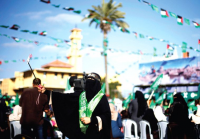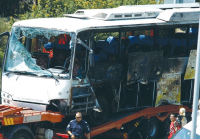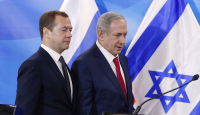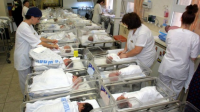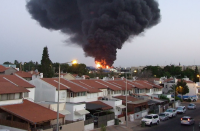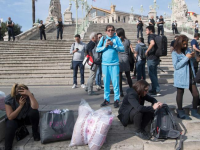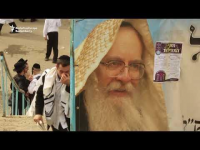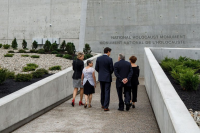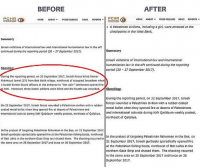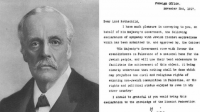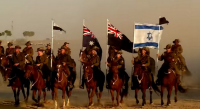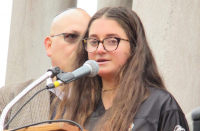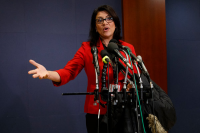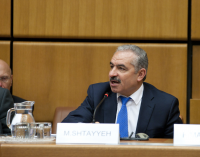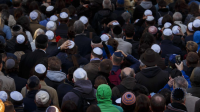
Links
Sheba Medical Centre
Melanie Phillips
Shariah Finance Watch
Australian Islamist Monitor - MultiFaith
West Australian Friends of Israel
Why Israel is at war
Lozowick Blog
NeoZionoid The NeoZionoiZeoN blog
Blank pages of the age
Silent Runnings
Jewish Issues watchdog
Discover more about Israel advocacy
Zionists the creation of Israel
Dissecting the Left
Paula says
Perspectives on Israel - Zionists
Zionism & Israel Information Center
Zionism educational seminars
Christian dhimmitude
Forum on Mideast
Israel Blog - documents terror war against Israelis
Zionism on the web
RECOMMENDED: newsback News discussion community
RSS Feed software from CarP
International law, Arab-Israeli conflict
Think-Israel
The Big Lies
Shmloozing with terrorists
IDF ON YOUTUBE
Israel's contributions to the world
MEMRI
Mark Durie Blog
The latest good news from Israel...new inventions, cures, advances.
support defenders of Israel
The Gaza War 2014
The 2014 Gaza Conflict Factual and Legal Aspects
To get maximum benefit from the ICJS website Register now. Select the topics which interest you.
The Middle East: The war of images
Seven casualties in Gaza beach: Was it a shelling attack by Israel? Or an exploding Palestinian land mine? An example of how sometimes Palestinians bend the truth.
Last Friday ten year old Huda Ghalia rose early, although she did not have any school. She was excited. The last exams were written, and large summer holidays had begun. Huda's father Ali had promised his children to organize a picnic at the beach in northern Gaza on that Friday last week. Huda is, a cousin tells us, one of the class scholars and loves math, biology and classics. Their favorite poem is by Mahmud Darwish: Calling Card is a sad poem about a homeless Palestinian and his hate for settlers. The family from the 35,000 inhabitant town of Beit Lahia loaded up with plastic tables and chairs, cooked ears of corn and Pita bread on the short way to the beach.
Beit Lahija is well-known for its strawberries, in addition, however, from here short-range missiles are fired on Israel.
For the father, one of his two wives and five of the sons and daughters the picnic had a deadly end. Before 5 PM a shell exploded g in the midst of the family. Seven humans lost their lives that Friday afternoon in the sand or in the ambulance.
The bloody picnic made Huda Ghalija famous within a few hours world-wide.
This was owing to the cameraman Zakarija Abu Harbed. Only few minutes after the explosion of shrapnel from a ball-filled shell the 36 year old cameraman from Gaza city with camera and full equipment was at the scene of the catastrophe.
A lucrative job Harbed works for the Arab TV Ramattan News Agency. The agency has offices in Ramallah in the West Bank and in Gaza city, the capital of the Gaza Strip.
The largest TV broadcasters in the world, CNN and ABC, news agencies such as Reuters and Associated press, and also German TV firms, work almost exclusively with Palestinian camera men, if it concerns reports out of the Gaza Strip.
The pictures of the hopeless world in the Gaza Strip are filmed primarily by Palestinians. As a cameraman, working for Western media is considered one of the most lucrative jobs in the Palestinian areas. Some earn as much as 250 US dollar a day, as much as some Palestinian extended families earn in half a year.
Cameraman Harbed had occupational luck on past Friday: He was first at the place of the misfortune. His agency, Ramattan news Agency sold the heart-rending pictures of the hysterical and tear-flooded Huda Ghalia to television stations around the entire world. In Australia as in India, in Europe as in the USA, Harbed's photographs of Huda were shown: As she tears her hair and strikes her chest, as she sinks beside her dead father into the sand, as she runs completely alone dozens of meters in the sand.
In the Arab world and in the Palestinian areas the cause of the death of the Ghalia family members was already certain on Friday: Israeli shelling.
This verdict was also bolstered by archive photos of Israeli soldiers firing artillery shells, which some Arab television stations cut into the film of cameraman Harbed.
In opinion of the Hamas-led autonomy authority, and in the opinion of Fatah head and president of Palestinian Authority, Mahmud Abbas, the Ghalias were killed by Israeli bombardment. They both used the word "massacre". In rare agreement still on Saturday, Hamas head of the government Ismail Hanija and Abbas symbolically adopted Huda and vowed they would be responsible for the remainder of their life for her living costs.
A Palestinian child, who lost its father, is considered as an orphan. (Huda's physical birth mother Hamdia survived the detonation with an injury)
Likewise the investigation of a team of the US human rights group, Human Rights Watch, concluded provisionally that Israel was responsible for the shell explosion.
The group formulates its conclusions, however, carefully and with less certainty:
After interviews with victims, eye-witnesses, policemen and physicians and visiting the scene of the disaster, one preserves "strong assumptions" that Israeli artillery is responsible for the misfortune. The report of the human rights groups does not mention however that their investigator researched the incident for evidence only after a day had elapsed - allowing enough time to remove important pieces of evidence.
The Israeli Ministry of Defense concluded, after first evaluations of radar and satellite photographs, that the projectile, which led to the death of the seven Palestinians did not originate with the army. Chief of Staff Dan Halutz said, that while Israel regrets the death of the seven Palestinians, this does not mean however "that we were responsible for it".
According to investigations of the Israeli army, based only on pictures and medical findings, not on on the scene searches, the Israeli army fired six shells in that Friday afternoon toward Gaza beach. According to data supplied by Halutz, five of the six shells hit in the time between 16.31 and 16.48 - approximately 250 meters north of that place, in which the family picnic had taken place. The artillery bombardment was due to Palestinian rocket launchers.
An unmanned airplane of the Israeli army filmed the Gaza Strip at the time of the bombardment from the air. On the films one sees on the one hand five impact holes of the shells in the beach, in addition, 250 meters to the south, humans. According to data of the army the explosion at the beach section, at which the Ghalias picnicked, must have taken place between 16.57 and 17.10.
Before 16.57 normal beach activity is to be seen on the film of the army.
The fact that humans did not react to the five shell impacts at 250 meters distance by rushing to escape is strange. The next scene on the army film shows ambulances, arriving at the beach. That is at 17.15 o'clock. The hospital, where the ambulances came, lies five minutes away from the site of the explosion.
Possible dud
Over the impact site the sixth shell,, which caused the death of the seven family members according to statements of human rights group and the Palestinian government as a dud, The Israeli army cannot give any information.
It regards it however as "impossible" that the shell deviated a whole 250 meters from its target.
As further proof Israel states that it treated four of the beach casualties in hospitals in Tel Aviv. From the body of one of the wounded fragments were saved, which could not have originated from weapons in the arsenal of the Israeli army.
The Israeli army does not exclude the possibility that the detonation was due to a mine, which had been buried there by Palestinians, in order to prevent the Israeli navy from landing commandos in the Gaza Strip.
In view of the contradictory statements, great importance is attached to Harbed's television pictures. These however raise more questions than they contribute to clarifying. The original photographs are in the meantime so doubtful that CNN shows them only in abbreviated form at its Website.
To the Sueddeutche Zeitung, Harbed explains that he had been informed afterwards about the explosion and driven to the scene by the rescue medics in the ambulance. In his pictures however, Harbed films the hysteria of the ten-year Huda, as if he were a witness of the detonation. Also he films the arrival of the medics, as though he was at the beach beforehand.
Additionally, some of the dead and wounded are covered with cloths - who did that?
Harbed claims that Huda escaped serious injury, since she was bathing in the sea. In his photos, however, Huda is running around in dry street clothes. Harbed runs several minutes of the crying Huda and afterwards turns his camera to the dead and injured.
Suddenly a man beside Huda's dead father can be discerned, until now covered and motionless, who appears with a machine gun in his hand. In the pictures of the cameraman one can recognize both medics in green OI clothes as well as dozens of men, most with typical Hamas full beards, apparently securing pieces of evidence.
However one must ask, why the medics do not worry about the injured people and policemen do not secure the place. Hove the Hamas men, as Israeli media quote Palestinian eye witnesses, removed pieces of evidence?
Evasive answers of the cameraman
It is also strange why in Harbed's pictures we cannot discern a crater. The more cameraman Harbed is asked by Sueddeutche Zeitung in the telephone interview, the more he evades the issue. Was he at the scene of the incident before the outpatient clinic [personnel] arrived? Who are the civilians, who are cleaning the beach? Who is the armed man in the ground, who suddenly gets up?
If it was an Israeli army shell that killed the Ghalia family members, why don't the Palestinians show its fragments?
And: Why didn't it occur to Harbed to calm the hysterical Huda down instead of pursuing her for several minutes with his camera? Harbed says: "She asked me to film her. She wanted to be shown to the world with her father and show the world what crimes Israel commits." The ten-year Huda, who lost seven family members, distraught in mourning, is supposed have given Harbed cinema direction instructions?
Pallywood
The fact that Palestinians in the Middle East war fabricate based on pictures or bring incorrect pictures into circulation is not new. In the media parlance following the US TV Magazine 60 Minutes one speaks of "Pallywood" - following Hollywoods film industry. In the [60 minutes] report for example one can see Palestinians of the latest Intifada, who carry a dead person on a stretcher.
Someone trips, the alleged dead man falls on the soil - and jumps swiftly again back on the stretcher, lies down and acts like a dead man.
A recent example of an attempt of Palestinians to lead the world public by the nose is the Israeli Air Force attack on last Tuesday on three members of the "Islamic Jihad", in which eight civilians, among them two children, were killed. After the attack on the car, in which the members of the terror group sat, one sees three men briefly, as they remove a short-range missile in a hurry from the car.
For two days the Ramattan TV news Agency Internet site blinked with an "urgent flash: Message for our customers . As if the company is anxious to further spread the Huda pictures, whose authenticity is doubted by many people, pointing out hereby that that it possesses exclusive rights to the pictures. Nobody has the right to disseminate the pictures further without consent of Ramattan news Agency.
(SZ of 16.6.2006)
Copyright belongs to the authors and originators.
# reads: 1669
Original piece is http://www.sueddeutsche.de/ausland/artikel/315/78237/5/

